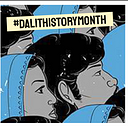Pashupatinath Temple Entry Movement — Dalit Assertion in Nepal

Today, in Dalit history month we remember the Pashupathi Temple Entry movement of 1954, a series of events, that defined an epoch in the history of Nepal’s Dalit movement.
The geographical location of Nepal adjoining the Himalayas and India has provided a larger space for various races and ethnic communities to reside in. In terms of culture and language, Nepal is a diverse state incorporating over 100 ethnic and caste groups. The stratification of society on the basis of caste and occupation has further created several social groups. The social stratification of castes and ethnic groups thereby created a rigid hierarchical structure confining each caste and ethnic groups to certain social limits.
Historically, the legalization of caste and untouchability in Nepal goes back to the Rana dynasty. The establishment of Rana dynasty in 1846 by Jung Bahadur Rana strengthened caste and untouchability in Nepal. The first set of codified law known as the Muluki Ain (Nation’s Code) in 1854 was introduced by Jung Bahadur Rana. With stringent legal code, these laws legitimised caste and untouchability making life worse for Dalits. The 1854 Muluki Ain was the first of its kind which enforced caste system as a legal institution.
It was only in the 1920s that the resistance movement in Nepal took an accurate path contesting against Rana rule. The primary aim behind anti-Rana movement was to dismantle the feudal structure and to outlaw the Muluki Ain of 1854. The anti-Rana movement also paved the way for various social movements, most importantly the Dalit movement. In the late 1940s, an organised Dalit movement gained momentum in Nepal.
The 1950s witnessed a new phase. Samaj Sudhar Sangh (Association for Social Reform) formerly known as Jat Tor Mandal ( Association to Annihilate Caste) was established in 1954 by Saharshanath Kapali. The primary aim of the organization was to end caste-based discrimination and untouchability. The Pashupatinath Temple entry campaign was initiated by Samaj Sudhar Sangh and was coordinated by Sidhi Bahadur Kadgi, Saharshanath Kapali, Mohanlal Kapali, Ganesh Yogi and Mewa Kapali were other leaders who led and helped in coordinating the movement.
Nearly 1100 Dalits began the attempt to enter Pashupatinath Temple. This forceful entry by Dalits into Pashupatinath Temple faced strong resentment from the state authorities, local people, and priest castes. The then Prime Minister, Tanka Prasad Acharya, issued strict orders to lathi charge and assault all those who forcefully entered the temple. Around 750 individuals were arrested of which 400 were women during the temple entry movement. The temple entry movement was in such a fierce mode that the state authorities were running out of jail space to accommodate the arrested individuals and finally had to actually let them go free. Eventually, the pressure created by this movement forced the government and “upper” caste locals to remove the signboard at the Pashupatinath temple that had proclaimed ‘Untouchables are Prohibited’.
This was a huge win against Brahmanical forces. With the success of this movement, a landmark in Nepali history and Nepali Dalit history had been set. One thing of note during this movement was the significant role women played within it.
Several women organised the agitations and even post this movement, continued to organise Dalit women into formal organisations. In 1955, under the leadership of Mithai Devi Biswakarma, a women’s association named Pariganith Nari Sangh (Association for Scheduled Caste Women) was established. Women carried forward the legacy of the temple entry agitation into everyday organising and have done so since.
Nepal underwent several government changes after this period. The temple entry movement was first of its kind in the initial democratic phase that Nepal witnessed. However, with King Mahendra’s introduction of the Panchayat System in 1970 all rights-based agitations, work, and organisations witnessed steep hurdles. Eventually, post-1990, Nepal witnessed massive political change again, and Temple entry movements were re-adopted to counter and resist caste-based discrimination and untouchability.
Today, Dalit rights in Nepal has considerably evolved with the new constitution in place as of 2015. Nepali Law now explicitly prohibits the ban on the entry of Dalit into temples. In addition, the establishment of institutions like the National Commission of Dalits has added immense value to the way in which Dalit rights are addressed. The legislative protection in place has given considerable momentum to Dalits who are making strides in all socio-political spheres. As a state with a relatively newly established constitution, Dalits in Nepal look forward to a dignified and respectful life based on the ideals of equality enshrined in the constitution.
The Pashupatinath temple entry movement has immensely inspired anti-caste movements in Nepal. Today, we remember the courage of all those who were part of this movement and who carried forward this energy. We salute the incredible revolutionary spirit of this movement that shaped and evolved Dalit movement in Nepal.
This post was written for Dalit History Month by Ashwini KP. Ashwini is a researcher and works on issues related to human rights, Dalit women, caste and social exclusion. You can reach her at ashwini.kp16@gmail.com
Sources
Prabodh Mani Devkota, (2002), Dalits of Nepal: Issues and Challenges, Feminist Dalit Organization, Kathmandu.
Yam Bahadur Kisan, (2005) The Nepali Dalit Social Movement, ShangriLa Printing Services, Katmandu.
Biswa Bhakta Dulal ‘Ahuti’(2014), Personal interview, Pul Chowk, Kathmandu, 29th November 2014
Krishna Khanal Frits Sollewijn Gelpke Uddhab Prasad Pyakurel (2012), Dalit Representation in National Politics of Nepal, Nepal National Dalit Social Welfare Organisation (NNDSWO)
Mom Bishwakarma, Political Transformation in Nepal: Dalit Inequality and Justice, Department of Sociology and Social Policy, The University of Sydney.
